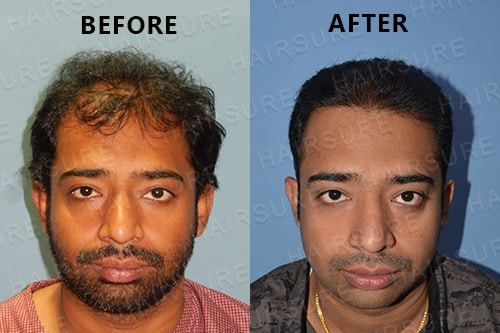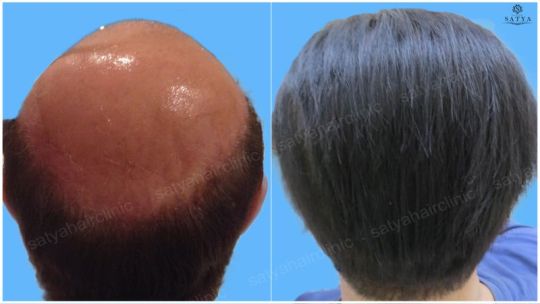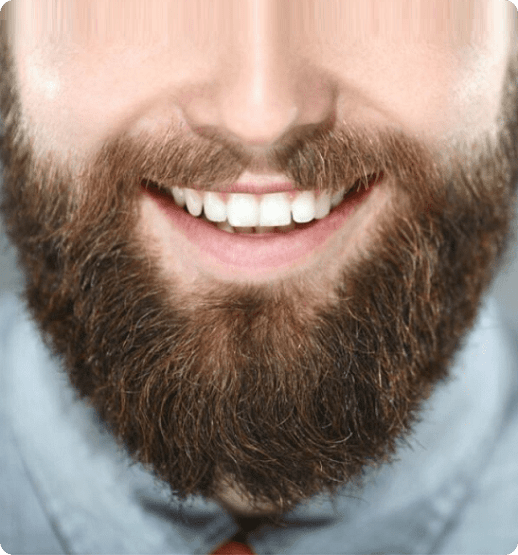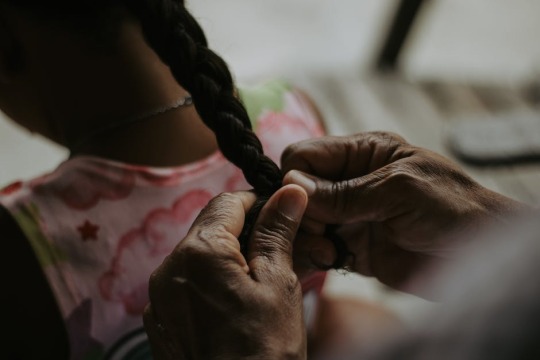Don't wanna be here? Send us removal request.
Text
Minoxidil is a medication that is commonly used to treat hair loss.
Minoxidil is a medication that is commonly used to treat hair loss. It is applied topically to the scalp and works by widening blood vessels in the scalp, which allows more oxygen, blood, and nutrients to reach hair follicles. This increased blood flow can help to promote hair growth and prevent hair loss. In this blog post, we will explore the benefits of minoxidil in more detail.
It can help to regrow hair: Minoxidil has been shown to be effective in promoting hair regrowth in people with androgenetic alopecia, which is the most common cause of hair loss. In clinical trials, minoxidil has been found to significantly increase hair density and thickness in both men and women.
It can slow down hair loss: Even if minoxidil doesn't regrow lost hair, it can still help to slow down the rate of hair loss. By improving blood flow to hair follicles, minoxidil can help to prolong the growth phase of the hair cycle, which can delay hair loss.
It is easy to use: Minoxidil is available in the form of a topical solution or foam, which makes it easy to apply to the scalp. It is usually applied twice a day, and it dries quickly, so there is no need to wash it out.
It has few side effects: Minoxidil is generally safe and well-tolerated, with few side effects. The most common side effect is scalp irritation, which can usually be resolved by switching to a lower concentration of minoxidil or using a different formulation.
It can be used in combination with other treatments: Minoxidil can be used in combination with other hair loss treatments, such as finasteride or hair transplantation, to maximize the effectiveness of the treatment.
It is affordable: Minoxidil is a relatively inexpensive treatment compared to other hair loss treatments, making it accessible to a wide range of people.
In conclusion, minoxidil is a safe, effective, and affordable treatment for hair loss. It can help to regrow hair, slow down hair loss, and improve the overall health of the scalp. It is easy to use and has few side effects, making it a popular choice for people looking to treat hair loss. If you are experiencing hair loss, talk to your doctor or dermatologist about whether minoxidil is right for you.
0 notes
Text
Male pattern baldness and hair transplantation.
Male Pattern Baldness and Hair Transplantation: How It Can Help Improve Your Confidence
Male pattern baldness is a condition that affects a significant percentage of men worldwide, and can have a profound impact on self-esteem and confidence. Fortunately, several treatments are available, including hair transplantation, which can help restore hair growth and improve the overall appearance of the scalp.

Understanding Male Pattern Baldness
Male pattern baldness is characterized by a receding hairline and thinning of the hair on the top of the head. While the exact cause of male pattern baldness is not fully understood, it is believed to be a combination of genetics and hormones. Men who have a family history of baldness are more likely to develop the condition, and it is often associated with the male sex hormone testosterone.
Impact of Male Pattern Baldness on Self-Esteem and Confidence
Male pattern baldness can have a significant impact on one's self-esteem and confidence. Many men report feeling less attractive and less confident as a result of their hair loss. It can also be a source of embarrassment, leading many men to avoid social situations or to try to cover up their baldness with hats or other headwear.
Hair Transplantation: An Effective Treatment for Male Pattern Baldness
Fortunately, several effective treatments are available for male pattern baldness, including hair transplantation. This procedure involves transplanting hair from one part of the scalp to the balding area, which can help restore hair growth and improve the overall appearance of the scalp.
The Hair Transplantation Procedure
The hair transplant procedure is typically performed under local anesthesia and is minimally invasive. During the procedure, hair follicles are extracted from a donor area of the scalp, usually at the back of the head, and are transplanted to the balding area. The procedure can take several hours, depending on the extent of the baldness and the amount of hair that needs to be transplanted.
Recovery and Results of Hair Transplantation
The recovery time for hair transplantation is relatively quick, and most patients can return to their normal activities within a few days. The transplanted hair follicles will initially fall out, but new hair growth will begin to appear within a few months. Most patients experience a significant improvement in their hair growth and overall appearance of their scalp.
Hair transplantation is a long-term solution to hair loss and can have a significant impact on one's self-esteem and confidence. It is essential to consult with a qualified and experienced medical professional before undergoing the procedure, to ensure that it is right for you.
In addition, it is important to have realistic expectations about the results of the procedure. While hair transplantation can significantly improve the appearance of the scalp, it is not a miracle cure for male pattern baldness. Some patients may require multiple procedures to achieve the desired results.
Conclusion: Restoring Your Confidence with Hair Transplantation
If you are suffering from male pattern baldness, hair transplantation may be an effective solution for restoring your confidence and improving your overall appearance. It is essential to consult with a qualified and experienced medical professional to determine whether the procedure is right for you. With careful consideration and realistic expectations, hair transplantation can help you regain your self-esteem and confidence, and get back to living your life to the fullest.
#hairtransformation#hairtransplantresults#hairtransplant#hairtransplantindia#fuehairtransplant#fue#satya#hairtransplantsurgery#fuehairtransplantation#hairtransplantationreview#drshaiilgupta
0 notes
Text
The Pros and Cons of Synthetic Hair Transplant: Is it Right for You?

Hair loss and balding can be a significant concern for many people, leading them to explore different solutions. One of the newest hair restoration technologies is Synthetic Hair Transplant. In this blog post, we'll discuss the pros and cons of this method to help you determine if it's the right choice for you.
What is Synthetic Hair Transplant?
Synthetic Hair Transplant is a non-surgical hair restoration technique that uses synthetic fibers to give the appearance of fuller hair. The fibers are attached to your existing hair using special adhesives, creating a more voluminous look.
Pros of Synthetic Hair Transplant:
Non-invasive: Unlike surgical hair transplant procedures, Synthetic Hair Transplant doesn't require any incisions or stitches.
Immediate results: You'll see the results of your Synthetic Hair Transplant right away, without having to wait for recovery time.
No downtime: You can resume your regular activities immediately after the procedure, as there's no downtime required.
Cons of Synthetic Hair Transplant:
Not permanent: Synthetic Hair Transplant is not a long-term solution, and the fibers will need to be reapplied regularly.
May be noticeable: If the synthetic fibers don't match your natural hair color or texture, they may be noticeable.
Pros & Cons of Synthetic Hair Transplant:
Pros Cons Non-invasive Not permanent Immediate results May be noticeable No downtime
Is Synthetic Hair Transplant Right for You? Synthetic Hair Transplant may be a suitable solution if you're looking for a non-invasive, immediate answer to hair loss or balding. However, it's important to weigh the pros and cons and consider if the benefits outweigh the drawbacks for you.
Conclusion: Synthetic Hair Transplant is a new hair restoration technique that provides immediate results without the need for surgery. While it may not be a permanent solution, it can be a good option for those looking for a quick fix to hair loss or balding. As with any medical procedure, it's important to consult with a specialist to determine if Synthetic Hair Transplant is right for you.
#SyntheticHairTransplant#NonSurgicalHairRestoration#HairLossSolution#BaldingSolution#HairTransplantAlternative#SyntheticHairFibers#FullerHair#InstantResults#HairThickness#HairLoss#ThickerHair#HealthyHair#HairCare#HairGoals#HairTransformation#ConfidentHair#hair transplant#hair clinic in delhi
0 notes
Text
A New Beginning: The Transformative Effects of Stem Cell Therapy in Hair Transplant India
Exploring the revolutionary benefits and possibilities of using stem cell therapy in hair restoration treatments
Losing hair can be a traumatic experience for many people, leading to a loss of self-esteem and confidence. Traditional hair transplant techniques, such as Follicular Unit Transplant (FUT) and Follicular Unit Extraction (FUE), have been used for decades to restore hair growth. However, a new and exciting treatment option is now available: stem cell therapy. This revolutionary treatment is quickly gaining popularity in hair transplant circles, and for good reason. In this blog post, we will explore the transformative effects of stem cell therapy in hair transplant India, and how it is changing the game for those looking to restore their hair.
What are stem cells and how do they work?
Stem cells are undifferentiated cells that have the ability to develop into different types of cells. They are found in various parts of the body, including the bone marrow, blood, and fat tissue. Stem cells are unique in that they can divide and multiply to form new cells, which can then be used to repair and regenerate damaged or lost tissue. In the case of hair restoration, stem cells are used to promote the growth of new hair follicles, resulting in thicker, fuller hair.
The stem cell therapy process:
The stem cell therapy process begins with the extraction of stem cells from the patient's own fat tissue. These cells are then processed and prepared for injection into the scalp. The stem cells are injected into the area of hair loss, where they begin to promote the growth of new hair follicles. The treatment is typically performed under local anesthesia and takes about two to three hours. Patients can expect to see visible results within a few months, with full results typically seen within six to twelve months.
Benefits of stem cell therapy:
Natural-looking results: Stem cell therapy uses the patient's own cells, which means that the resulting hair growth is completely natural.
Minimal scarring: Unlike traditional hair transplant techniques, stem cell therapy does not involve the removal of a strip of scalp, resulting in minimal scarring.
Faster recovery: Stem cell therapy is less invasive than traditional hair transplant methods, which means that recovery is quicker and less uncomfortable.
Can be used in combination with other treatments: Stem cell therapy can be used in conjunction with other hair restoration treatments, such as FUE or FUT, to enhance results.
Cost-effective: Stem cell therapy is a more cost-effective treatment option compared to traditional hair transplant methods.
Conclusion:
Stem cell therapy is a game-changing treatment option for those looking to restore their hair. It is a safe and effective treatment that uses the patient's own cells to promote the growth of new hair follicles. The benefits of stem cell therapy include natural-looking results, minimal scarring, faster recovery, and the ability to be used in combination with other treatments. Additionally, stem cell therapy is a cost-effective treatment option compared to traditional hair transplant methods. If you are considering hair restoration, stem cell therapy is definitely worth exploring as an option.
0 notes
Text
The Ultimate Guide to Hair Weaving: Benefits, Types, and Maintenance.
Introduction to hair weaving:
Hair weaving is a popular hair extension method that involves adding additional hair to your natural hair. It can be used to add length, volume, or both to your natural hair, and it allows for a lot of versatility in styling. There are several different types of hair weaving, each with its own set of benefits and drawbacks. In this guide, we'll explore the different types of hair weaving, the benefits of hair weaving, and how to maintain your hair weave.

Benefits of hair weaving:
There are several benefits to hair weaving:
Adds volume and length to natural hair: One of the most obvious benefits of hair weaving is that it allows you to add volume and length to your natural hair. This can be especially helpful if you have thin or short hair, or if you just want to try out a new look.
Low maintenance: Hair weaving is relatively low maintenance compared to other hair extension methods. Once it is installed, you don't need to do much to maintain it.
Versatility in styling: With hair weaving, you have a lot of flexibility in terms of styling. You can wear your hair in a variety of styles, including braids, ponytails, and up-dos.
Can protect natural hair: If you have damaged or brittle hair, hair weaving can provide a protective layer over your natural hair. This can help to prevent further damage and allow your natural hair to grow and repair itself.

Types of hair weaving:
There are several different types of hair weaving, including:
Sew-in weave: A sew-in weave involves braiding your natural hair into cornrows and then sewing the hair extension tracks onto the braids. This is a popular method because it is relatively easy to install and provides a natural-looking result.
Bonded weave: A bonded weave involves attaching the hair extensions to your natural hair using a bonding agent, such as glue or a special tape. This method is quick and easy, but it can be more damaging to your natural hair than other methods.
Lace front weave: A lace front weave involves attaching a lace cap to your hairline and then sewing or gluing the hair extensions to the cap. This method creates a natural-looking hairline, but it can be time-consuming to install.
Clip-in weave: A clip-in weave involves attaching the hair extensions to your natural hair using clips. This is a temporary method that is easy to install and remove, but it may not be as secure as other methods.
#hairtransplant#onlineconsultation#telemedicine#expertadvice#qualifiedsurgeon#convenientcare#hairrestoration#hairlosssolution#hairgoals#confidenthair#drshaiil#fue#fut#MHT#hair transplant#hair clinic in delhi#hair clinic near me#fuehairtransplant#youtube#hair problems#hair
0 notes
Text
The Risks of a Second Repeat FUE Hair Transplant
Understanding the potential drawbacks of multiple hair transplant procedures
When it comes to hair loss, many people turn to hair transplant procedures as a solution to restore their thinning or balding hair. Follicular unit extraction (FUE) is a popular technique that involves the removal of individual hair follicles from a donor site on the scalp and transplanting them to the area of hair loss. While FUE can be an effective treatment for hair loss, it is not without its risks and drawbacks, particularly if a second repeat procedure is necessary.
What is a second repeat FUE hair transplant?
A second repeat FUE hair transplant refers to a second procedure that is performed after the initial FUE transplant. This may be necessary if the first procedure did not produce the desired results or if the patient experiences additional hair loss after the first procedure.
The potential risks of a second repeat FUE
There are several potential risks and drawbacks to consider before undergoing a second repeat FUE hair transplant. These include:
Scarring: FUE involves the creation of small incisions in the scalp to extract and transplant the hair follicles. While these incisions are generally small and heal quickly, they can still leave scarring on the scalp. A second repeat FUE procedure can result in additional scarring on the scalp, which may be more noticeable if the first procedure left significant scarring.
Poor hair growth: While FUE can be an effective treatment for hair loss, there is no guarantee that the transplanted hair will grow as desired. A second repeat procedure may not result in additional hair growth or may produce patchy or uneven growth.
Damage to existing hair: The FUE procedure involves the removal of hair follicles from the donor site, which can potentially damage the surrounding hair. A second repeat procedure can further damage the existing hair and may result in a loss of density in the donor area.
Cost: Hair transplant procedures can be costly, and a second repeat FUE procedure will likely add to the overall cost. It is important to carefully consider the costs and benefits before proceeding with a second repeat procedure.

Alternative treatment options
If you are considering a second repeat FUE hair transplant, it may be worth considering alternative treatment options. These may include medications such as minoxidil or finasteride, which have been shown to be effective in slowing or preventing hair loss. Hair systems and wigs are also options for those who are not interested in surgical treatments.
In conclusion, while FUE can be an effective treatment for hair loss, it is important to carefully consider the potential risks and drawbacks of a second repeat procedure. Alternative treatment options, such as medications and hair systems, may be worth considering before proceeding with a second procedure.
0 notes
Text
Unlock the Power of Beard Hair Transplantation

Unlock the Power of Beard Hair Transplantation: A Comprehensive Guide
Are you tired of struggling with patchy or thin beard growth? Do you dream of having a thick, luscious beard like your favorite celebrities? If so, it may be time to consider beard hair transplantation.
What is Beard Hair Transplantation?
Beard hair transplantation is a surgical procedure that involves the transfer of healthy hair follicles from the donor area (usually the back of the head) to the desired areas of the beard. This procedure can restore fullness and density to the beard, giving you the thick, masculine appearance you desire.
How Does the Procedure Work?
The procedure begins with a consultation with a qualified surgeon, such as Dr. Shail Gupta at Satya Hair Clinic. During the consultation, your surgeon will assess your beard growth and determine the best course of treatment for your individual needs.
Next, the surgeon will carefully extract healthy hair follicles from the donor area and transplant them into the desired areas of the beard. The procedure is minimally invasive and is typically completed in a single day.

What to Expect After the Procedure.
Immediately following the procedure, you can expect some mild swelling, redness, and tenderness in the treatment area. These symptoms should resolve within a few days. You may also experience some crusting or scabbing, which is completely normal and will eventually flake off.
It's important to follow all post-operative instructions provided by your surgeon, including
#breadhair#krimpenumbuhbulu#loveit#hustlelife#hairtransplant#fut#PRP#prpsessions#fue#hairloss#hairtransplantation#hair#hairrestoration#hairtransplantturkey#repairtransplant#fuehairtransplant#hairlosstreatment#badhairtransplant#repairhairtransplant
0 notes
Text
BODY HAIR TRANSPLANT TREATMENT
What is body hair transplant treatment?
Body hair transplant treatment is a type of medical procedure that involves transplanting hair from one part of the body to another. This is typically done to restore hair in areas where it has thinned or been lost, such as on the scalp or eyebrows. Body hair transplant treatment is a form of hair restoration surgery that can be performed on both men and women. It is generally considered a safe and effective way to restore hair in areas where it has been lost or thinned.

How does body hair transplant treatment work?
Body hair transplant treatment typically involves extracting hair from a donor area of the body, such as the chest or back, and transplanting it to the area where hair is thinning or has been lost. The hair is typically removed from the donor area using a special surgical technique called follicular unit extraction (FUE), which involves removing individual hair follicles from the scalp. The hair follicles are then carefully transplanted to the recipient area, where they will continue to grow and produce hair.
Body hair transplant treatment is typically performed under local anesthesia, so the patient is awake during the procedure but does not feel any pain. The entire procedure usually takes several hours to complete, depending on the amount of hair being transplanted. After the procedure, the patient may experience some swelling, bruising, and redness at the transplant site, but these symptoms typically resolve within a few days.
Who is a candidate for body hair transplant treatment?
Anyone who has thinning or lost hair in an area where they would like to restore it may be a candidate for body hair transplant treatment. However, the best candidates for this type of treatment are typically in good overall health and have a sufficient supply of healthy hair in a donor area. In general, body hair transplant treatment is not recommended for people who have severe hair loss or a medical condition that affects the growth of hair.
It is important for potential candidates to consult with a qualified provider to determine if body hair transplant treatment is right for them. During the consultation, the provider will assess the patient's overall health, hair loss pattern, and the availability of healthy hair in a donor area to determine if they are a good candidate for the procedure.
How to find a qualified provider for body hair transplant treatment?
When looking for a qualified provider for body hair transplant treatment, it is important to research the provider's credentials and experience. Some things to consider include:
Medical license and credentials: Make sure the provider is a licensed medical doctor with specialized training in hair transplant surgery.
Experience: Look for a provider who has experience performing body hair transplant treatment, and ask about their success rates and any complications they have seen in their patients.
Facility: Make sure the provider operates out of a clean, sterile, and well-equipped medical facility.
Accreditations: Look for a provider who is accredited by a reputable organization, such as the International Society of Hair Restoration Surgery or the American Board of Hair Restoration Surgery.
It is also a good idea to ask for referrals from other healthcare providers or to read reviews from previous patients to get an idea of the provider's reputation and track record. Finally, be sure to discuss any concerns or questions you have with the provider before undergoing treatment.

#hairtransplant#fut#PRP#prpsessions#fue#hairloss#hairtransplantation#hair#hairrestoration#hairtransplantturkey#repairtransplant#fuehairtransplant#hairlosstreatment#hairtransformation#reels#reelsinstagram#hair transplant
0 notes
Text
Stem Cell Treatment.
Stem Cell Treatment: A Revolutionary Medical Advancement
Stem cell treatment is a medical advancement that involves the use of stem cells to treat or cure various diseases and conditions. Stem cells are special cells that have the ability to develop into different types of cells in the body. They are undifferentiated cells, which means that they have not yet specialized into a specific type of cell, such as a skin cell or a muscle cell.
Stem cell treatment involves harvesting stem cells from the body or from a donor, and then introducing them into the body where they are needed. The stem cells then differentiate into the appropriate type of cell and begin to repair or replace damaged tissue, potentially providing a cure for the disease or condition being treated.
One of the major advantages of stem cell treatment is its potential to regenerate damaged tissue and organs, which could potentially provide a cure for conditions that were previously considered incurable. For example, stem cell treatment has been used to successfully treat conditions such as heart disease, spinal cord injuries, and various types of cancer.
Additionally, stem cell treatment has the potential to be less invasive and more effective than traditional treatments, such as surgery or medications. This makes it an appealing option for patients who may not be eligible for or who do not want to undergo more traditional forms of treatment.
Overall, stem cell treatment is a revolutionary medical advancement that has the potential to change the way we treat diseases and conditions, and to provide hope for patients who may have previously been out of options.
The Benefits and Risks of Stem Cell Therapy
Stem cell therapy is a type of medical treatment that involves the use of stem cells to repair or replace damaged or diseased cells in the body. Stem cells are a type of cell that have the ability to develop into different types of cells, and they are often used in medical treatments because of their ability to regenerate and repair damaged tissue. One of the main benefits of stem cell therapy is that it has the potential to treat a wide range of diseases and conditions, including Parkinson's disease, diabetes, and heart disease. However, like any medical treatment, stem cell therapy also carries some risks, including the potential for adverse reactions or complications. It is important for patients to carefully weigh the potential benefits and risks of stem cell therapy before undergoing treatment.
How Stem Cell Treatment Can Help with a Variety of Medical Conditions.
Stem cell therapy is a type of medical treatment that involves the use of stem cells to repair or replace damaged or diseased cells in the body. Stem cells are a type of cell that have the ability to develop into different types of cells, and they are often used in medical treatments because of their ability to regenerate and repair damaged tissue. This makes them particularly useful for treating a wide range of medical conditions, including:
Heart disease: Stem cells can be used to repair damaged heart tissue, helping to improve heart function and reduce the risk of heart failure.
Diabetes: Stem cells can be used to regenerate insulin-producing cells, helping to improve blood sugar control and reduce the need for insulin injections.
Parkinson's disease: Stem cells can be used to replace damaged cells in the brain that are responsible for producing dopamine, a chemical that is essential for controlling movement.
Spinal cord injuries: Stem cells can be used to repair damaged tissue in the spinal cord, helping to improve movement and sensation.
Bone marrow transplant: Stem cells from the bone marrow can be used to replace damaged or diseased bone marrow, helping to restore the body's ability to produce healthy blood cells.
Finding a Qualified Stem Cell Treatment Provider.
When looking for a qualified stem cell treatment provider, it is important to research the provider's credentials and experience. Some things to consider include:
Medical license and credentials: Make sure the provider is a licensed medical doctor with specialized training in stem cell therapy.
Experience: Look for a provider who has experience performing stem cell treatments, and ask about their success rates and any complications they have seen in their patients.
Facility: Make sure the provider operates out of a clean, sterile, and well-equipped medical facility.
Accreditations: Look for a provider who is accredited by a reputable organization, such as the American Association of Stem Cell Physicians or the International Society for Stem Cell Research.
It is also a good idea to ask for referrals from other healthcare providers or to read reviews from previous patients to get an idea of the provider's reputation and track record. Finally, be sure to discuss any concerns or questions you have with the provider before undergoing treatment.

0 notes
Text
Hair transplant cost in the world.
Hair transplant cost can range anywhere from $4,000 to $15,000. The average cost of a hair transplant in the United States is $10,000. However, the cost of a hair transplant procedure can vary greatly depending on the country you have the procedure done in. For instance, a hair transplant in Turkey can cost as little as $2,500. This is due to the fact that there are many reputable and experienced surgeons in Turkey who offer competitive prices. In addition, the low cost of living in Turkey also contributes to the lower cost of a hair transplant procedure. If you are considering having a hair transplant done, it is important to research the costs in various countries before making a decision. You should also take into consideration other factors such as the experience of the surgeon and the reputation of the clinic.

#hair#hairstylist#longhair#hairdresser#hairgoals#transplant#cost#hairygay#haircaretips#hairmakeover#hairbundle#worldisforhairdressers#worldchildrensday#worldphotographyart#hairfade#hairlight#hairclipmedan#hairclipmalang#costierasorrentina#hairshaftangel
0 notes
Text
Beard transplants: the new must-have for men?
Beard hair transplant is a procedure to implant beard hair onto the face. The procedure is performed by taking hair from the back of the head and implanting it into thebeard area. This gives the appearance of a fuller, thicker beard. The results are permanent and there is no chance of the transplanted hair falling out.

0 notes
Text
Role Of Medicine In Hair Loss Treatment
Medical treatments for hair loss have come a long way over the past few years, with more advanced strategies emerging every day. For some people, these newer approaches work better than earlier ones, leading to improved results.
For others, though, they do not work or need to be used in combination with another treatment. This is particularly true for topical medications like minoxidil (the most common prescription drug for treating balding) and diazolines, which were once considered the best non-surgical option.
Click here to book an appointment for Best Hair Fall Treatment in Delhi
It is important to note that many of these new options require several months to show effect, even when used consistently. People who are seeking relief should stick with each product for that time frame before evaluating whether it worked for them.
Medical therapies can help you avoid surgical procedures, but they will only do so if you use them properly. If your treatment does not seem to be helping after a certain amount of time, try switching brands or types of therapy to see if that changes how well it works.
If those fail, then go back to what we call the standard of care, which is still topically administered drugs such as minoxidil and thiazolidine. But remember, while they may not cure hair loss, they can definitely improve your quality of life by enhancing appearance-related issues.
Medical conditions that cause hair thinning

Photo by MART PRODUCTION on Pexels
Certain medical conditions can contribute to hair loss, sometimes actively and sometimes passively. Some conditions may even be able to induce total hair loss if you are sensitive to them.
Click here to book an appointment with Best hair transplant Clinic in Delhi
Certain diseases or treatments can actually promote hair shedding and/or complete baldness. This is referred to as alopecia.
Alopecia can occur due to inflammation or immune system reactions. For example, lupus is an autoimmune disease that can affect many parts of your body, including your skin.
People with lupus often develop scarring around their mouth and nose (called oral mucosal lesions) which can easily become infected. When bacteria enter the area, there is typically a lot of bleeding and fluid buildup which removes moisture from the exposed scalp surface. This could potentially lead to dry, flaky skin and hair loss.
Some antibiotics can also have severe side effects on patients who are susceptible to acne. These potential side effects include hair loss. People who are already experiencing hair loss can especially be at risk for this kind of reaction.
Treat hair loss with medication
youtube
There are many ways to treat hair thinning, including drug treatments. Your doctor will evaluate your hair and scalp condition, as well as do some tests to determine if there is a risk factor for hair loss. They may recommend using tazorbuline or minoxidil (the main ingredient in Rogaine) topically to ensure optimal results.
There are several medications that can be used to treat male pattern baldness. These include topical drugs such as minoxidil and finasteride (brand name Propecia), oral drugs like dihydrotestosterone (DHT) inhibitors like flutamide and ketoconazole, and implants designed to release either Dihydrotestosterone (an androgen hormone) or estrogen which helps stimulate growth.
While each treatment has its own level of effectiveness, most find success when combined under one system. For example, men who suffer from stage three hair loss often experience a decrease in efficacy after taking finasteride orally. A cream containing minoxidil works better if applied directly to the skin. By combining these two products into one, you get the best possible outcome.
Treat hair loss with hair transplants

There are two main types of treatments for hair thinning or hair loss, both of which can be done by board-certified dermatologists. The first is topical products such as minoxidil (Xalderm) or diazolidinylurea (Avodart), which you apply directly to your scalp.
The second is internal therapies, such as finasteride (Propecia) or ketoconazole (Nizoral). Both work by inhibiting dihydrotestosterone (DHT), a hormone that stimulates hair growth. By suppressing DHT, hair follicles are prevented from moving on to the next stage of development, resulting in overall hair loss.
Looking for Hair Transplant Clinic in Delhi?
The role of medicine in hair loss treatment ixnay not only in treating hair fall but also potential re-growth of hair. Because these medications are usually administered orally, they have the additional effect of improving skin health and quality of life.
However, they do come with some risks, so it’s important to discuss them with your doctor.
Hair loss prevention

There are several ways to help prevent hair thinning and total hair loss. These include using sun protection products, limiting your alcohol intake, eating well, exercising, and finding the right amount of stress you can bear.
Many people begin to notice hair thinning around age 30-40, so it is important to be aware of early signs of hair loss. This may be because of genetics or external factors such as diet and lifestyle.
It is very common for people to lose some hair during times of extreme stress, particularly related to health issues or life changes.
Drinking too much alcohol can have an adverse effect on how well hairs grow and stay thick. So drinking alcoholic beverages in moderation is best.
Exercise is another way to keep your heart pumping and maintain a healthy weight. Getting adequate sleep is also crucial for overall wellness and hair growth.
I would like to speak more about one specific cause of hair loss. More than half a century ago, surgeons used x-rays to determine if there was bone erosion under the skin of the scalp.
This procedure is now called a teledermatoscopy, which means “skin examination by X-ray.” Doctors use this test to identify patterns of hair loss that suggest either alopecia Universalis or patterned hair loss.
Look into the source of your hair loss

Photo by RF._.studio on Pexels
When it comes to hair, nature can be quite dramatic at times! Some people suffer from more intense hair thinning or hair loss than others. This is due to genetics.
Some genes cause certain traits to strengthen hairs that are already there or to promote new growth, whereas other genes weaken this process.
It has been shown that some genetic factors play a much larger role in hair loss than others. For example, if you have very strong genetic hair-thinning markers, then lifestyle issues such as poor nutrition, weight gain, stress, and the use of harmful chemicals may also contribute to hair loss.
However, just because someone with similar genetics does not experience significant hair loss does not mean that their personal hair care routines are safe and effective for them.
There are many things that can affect how well your skin functions, so why would hair be any different? In fact, when performing a cost/benefit analysis of various treatments, looking beyond the surface-level effects is important.
Avoid hair loss by using a hair growth supplement

Photo by Yaroslav Shuraev on Pexels
There are several different types of supplements that claim to help promote hair growth or prevent hair thinning. While some work, many do not!
Before trying any new product, you must first determine if your current treatments and strategies are working for you.
If they are, then there is no need to try something new. If they are not, then it is probably best to stay with what works until you find one that does.
There are many ways to treat male pattern baldness so unless your symptoms get worse, there is no need to add another product to manage them.
Click here to book an appointment for Best Hair Transplant Treatment in India
0 notes
Text
Is PRP The Key To Youthful, Glowing Skin?
Looking young is one of the top ways to boost your self-confidence. And while professional appearances are always great to strive for, there are some things we can do at home to achieve that look!
Looking for PRP Treatment in Delhi?
One such way is using platelet-rich plasma (PRP) treatments. What is this treatment you ask? It’s an injection that includes blood cells. The number of injection varies from person to person depending on their skin type and what effects they want to get.
There are several reasons why these injections are becoming more popular. Some say it helps reduce wrinkles and enhance cell regeneration, while others claim it boosts collagen production. Either way, it’s worth giving it a try!
This article will discuss how to do your PRP treatment at home, what equipment you need, and if this procedure is right for you.
What Is PRP?

Recent trends in cosmetic treatments include something called platelet-rich plasma (PRP) therapy. This is an expensive option that has many people talking. However, some studies show it can work!
PRP comes from your blood. Your body naturally forms plates of bone and collagen as you age. When there are more amounts of platelets, the blood is considered “platelet rich”.1
Dr. Marnie Choi performs this procedure at her clinic using your own blood donated by YOU!. She then mixes the platelets with another solution to create what she calls Growth Factor Extracts or GFE for short.2
These growth factor extracts contain various proteins such as PDGF, TGFB, IGF, and VEGF. The way these growth factors work is by stimulating cell proliferation which means they help cells reproduce.3
Their main function is to promote new skin cell production so that wounds heal faster and better.4 You may also notice improved dryness and soft tissue repair.
Does it work?
youtube
Recent studies have shown that placenta products are very effective in helping your skin look healthier and more evened out. This is great news as they can be done at home!
There are several different types of natural placenta treatments you can use for your skin. Some people may feel more comfortable trying one type over another, so here we will discuss some pros and cons of each.
Check out why PRP Treatment in Delhi is always recommended
You should try all of them if you want the best results because some might not work for you or your skin. As with any new skincare routine, do not apply too much product or it may cause dryness or irritation.
PRPs are probably the most popular form of placenta treatment. They are usually mixed into a gel or cream format and applied directly onto affected areas of the skin. This may be used every few days or once per week depending on how your skin responds to it.
Some research has shown positive effects when using this method twice a month for a couple of months. But there is no set timing for using it since everyone’s skin reacts differently.
Are there side effects?

While professional-grade platelets have little or no fluid in them, your own blood typically contains enough liquid for it to work. Therefore, you do not need to worry about scarring due to dryness as they are usually built with gel or foam that helps retain moisture.
This may be problematic if the treatment is done outside the body, however. One area where people tend to run into issues is when applying the product after intake. When used externally, PLTs can clog up the skin’s natural oil production, leaving you with very uncomfortable, drier-than-normal skin. This can also cause red marks and irritation which can make the skin look worse!
Another problem some people experience is inflammation. Some individuals develop small lumps or bumps under their skin that require repeated touching or scratching away to go down. These changes happen because the body mistakenly perceives the added platelets as foreign invaders and responds by protecting itself.
Overall though, these problems are relatively rare and easily treatable. If you feel any discomfort while using this product, stop immediately and apply some extra moisturizer.
What results will I see?

By removing plasma (the fluid part of your blood) along with white blood cells, you reduce inflammation. This helps mitigate the symptoms people with rosacea may experience, such as red or florid skin, swollen glands, facial blotchiness, and pitting edema (watery swelling).
In fact, some patients report complete remission after just one session! While there isn’t much research done on PRP for rosacea, these results are promising because it shows that the procedure does work.
However, before undergoing this process, make sure your symptoms aren’t due to another condition. It is also important to discuss any concerns you might have regarding potential side effects.
How much does it cost?

A popular treatment used to combat this is something called platelet-rich plasma (PRP) therapy. What this does is stimulate your own cells to produce more growth factors. These are chemicals that help keep your skin healthy and regulate other functions of the body.
When done correctly, it can be quite successful in re-stimulating the production of these needed skin nutrients. However, there are no formal regulations or guidelines concerning how many treatments one should receive.
This is why it is important to do research and speak with professionals about what product works best for you.
Is it safe?

There are several ways to do skin treatments, with most being appropriate depending on your skin type and what you want to achieve. People often get confused as there are different types of peels, each requiring its own length of time to see results.
Tracy has done some great articles about which ones are necessary for your particular needs! Her article can be found here- link in description!
Visit Best Clinic For PRP Treatment in Delhi
PRPs are usually considered more extreme than other forms of peelings because they contain growth hormones. This makes them slightly more expensive due to the cost of the product and the regulation needed to make sure only pure products that have no contaminants are used during treatment.
There have been reports of people experiencing discomfort or pain while having a PRP procedure, however, this is very uncommon. More likely causes include someone applying the platelet gel incorrectly or directly onto the area needing treatment instead of using an applicator stick first.
Since we know how powerful growth hormone is, injecting it into your skin may cause overexposure and potential side effects. It is important to do research before doing any procedures so you are aware of all possible outcomes.
#hair transplant#hairgoals#hair clinic in delhi#hair clinic near me#hair problems#hair solution#Youtube
1 note
·
View note
Text
When you do and DON'T need Hair Transplant?
Definition of hair transplant

A very popular way to treat balding is by using follicular unit transplants (FUTs). This is also known as “tug-of-war” or “bundle transfer” surgery. With FUTs, individual hairs are extracted from area that is still fully endowed with hair and transferred onto another area where there is less coverage.
If you want to know more about Hair Transplant in Delhi click here.
In some cases, this can be done superficially under the skin layer or slightly deeper, but either approach requires only minimal healing time. Because the healed tissue in the donor site forms new collagen and elastic fibers, it becomes more resistant to pull out.
This isn’t always the case for full thickness grafts which require thicker epithelial linings that don’t strengthen as much. However, most experts agree that thin FUE should be avoided due to potential complications like broken needles that could enter the donor area.
Medical conditions that can lead to hair loss

There are many different medical conditions that can cause you to lose your hair, with some types requiring more extensive treatments than others. Fortunately, most cases of balding will resolve themselves without cosmetic or surgical intervention!
Certain diseases and medications can contribute to hair thinning or total alopecia, which is when all of the hairs in the scalp are lost.
Some examples of this include stress, nutritional deficiencies, autoimmune disorders like lupus and vitiligo, certain cancer therapies (chemo-therapy or radiation), HIV/AIDS, use of corticosteroids, and genetics.
Fortunately, most people do not require any kind of cosmetic hair transplant to restore their look once these factors have resolved themselves.
If you're looking for Best Hair Transplant and Hair Loss Treatment in India at Affordable Cost visit Satya Hair Clinic in Delhi as they are very well known and trusted in the field of Hair experts.
Medical conditions that do not cause hair loss

For people with thin or even balding hair, cosmetic transplant is often the next step to improve your appearance. But before you go through the process of finding donors and undergoing surgery, you must be sure that your symptoms are due to cosmetic issues and not something more serious.
Certain medical conditions can result in thinner hair, but they usually do not require surgical intervention.
Medical conditions such as:
Can hair transplant fix hair loss?

Although there are some cases of total baldness that can be treated with cosmetic hair transplants, this is not always necessary. For people who feel that their scalp no longer produces enough hairs to satisfy your aestheic needs, we have another solution for you!
Hair replacement treatments such as minoxidil or shampoos containing vitamins B and F promote growth by stimulating existing hair cells. Both of these treatments work by enhancing the body’s natural hormone profile to produce and maintain new hair.
There are also external devices such as trimmers and clippers that help you achieve your desired look more efficiently. While it may seem like a costly or time-consuming process at first, down the road this will save you money and time in cost per results.
We highly recommend talking to us about all potential treatment options before deciding what is right for you.
What are the results?

Although hair transplant is considered to be one of the most expensive cosmetic procedures, it does not always need to be done. If you suffer from androgenetic alopecia, or patterned balding, there are some treatments that can help you feel better about your appearance.
Tye-dye techniques and low cost shampoos and products can reduce symptoms and even reverse hair loss. For people who have very little hair, growing their own scalp tissue may be the best option.
However, for patients with more significant thinning, grafts are still the optimal solution. Fortunately, our experts are here to talk you through the process so you’re confident in what direction to go.
We’ve gathered information and answers from Dr. Anupam Chatterjee, MFA (Hair Loss) – Medical Director at The Board Certified Center for Aesthetic Medicine, Scott Hahn, MD FACMPE (Auricular Reconstruction & FUE), and Charles Gutschow, DO (Plastic Surgery - Generalist).
So let's dive into questions about non-graft options for treating hair loss!
Who performs hair transplantation?

Only board certified, licensed physicians can perform hair transplants. This includes dermatologists, ear, nose, and throat (ENT) doctors, plastic surgeons, and others with additional training in cosmetic medicine.
Many general practitioners who’ve completed their medical school are not allowed to do hair transplant procedures. They may refer you to someone else, but they cannot actually perform them themselves.
This is why it is so important to find a good hairloss specialist that specializes in hair loss.
Board-certified specialists must go through rigorous testing before being given certification, and every few years they must prove they still know what they're doing by performing a small number of cases under strict observation.
There are several organizations that offer this certification, but none are more prestigious than The International Board of Hair Restoration Surgery (IBHRS). Over 70% of all active members are accredited. You can check if your doctor is IBHRS member here.
The reason for this importance is because only professionals can properly assess whether or not transplantation is needed, determine which areas need to be replaced, and where there is enough donor tissue.
They also make sure proper healing occurs and the recipient skin takes over the job of protecting the transplanted hairs. A poor graft will get lost and patients may develop fungal infections due to improper wound care.
Certain types of hair transplantation such as strip techniques require less precision, but they are much safer alternatives to
Are there risks?

There are always potential complications with any surgery, but hair transplant is no different. Some of the most common issues include wound healing problems, donor site pain or numbness, and transplanted hairs that do not grow.
In some cases, patients will get very little growth from their transplants, which usually indicates poor quality donors or improper manipulation of the grafts. This can be due to patient stress or lack of sleep, or disease in the donor area.
Rarely, a patient’ll get significant regrowth, but it won’t stay. This is called “regrafting.” It typically happens within the first six months and is sometimes reversible through additional treatments.
There have been reports of people who develop cancer after having a hair transplant. While this is extremely rare, we recommend staying on top of your health before undergoing the procedure and checking yourself for signs or symptoms of anything unusual.
What should I ask my doctor about hair transplantation?
https://images.pexels.com/photos/4588416/pexels-photo-4588416.jpeg?auto=compress&cs=tinysrgb&h=650&w=940
Almost every patient seeking hair transplants wants to know if this is the right solution for them. It is very common to feel nervous or even anxious before your procedure, but there are some things you can ask your doctor that will help ease these nerves.
It is important to be prepared for both positive and negative results from hair transplantation. Some patients may need more than one session to achieve their desired result, which could affect how they move on with their lives.
Many doctors offer different levels of care in terms of hair restoration. There are usually steps on the up-sell list as well as down-sell lists. This means that even though someone may start out looking at only transplant sessions, it is possible to add onto their plan later.
There are also various treatments and strategies used to ensure good outcomes after surgery. Make sure to look into all of those so that you are fully informed!
Which type of hair transplant is best?
youtube
While most people associate hair transplants with strip-style procedures, there are other types! Most surgeons will tell you that Follicular Unit Strip (FUT) style is the safest and most effective way to do a scalp hair transplant. This procedure does not require pulling too many hairs at once or using very many grafts.
In fact, it’s been shown to work just as well as more invasive techniques like microplugs or mini-strip implants. Due to this, some practitioners have begun doing only single unit FUE transplants which use one extremely thin layer of hair per follicle.
This article will talk about why some less invasive approaches may be appropriate for your situation depending on how much growth potential you have and if you can wait until later to restore full density and thickness to your hair.
0 notes
Text
What is Mesotherapy and It’s effects?
Recent studies have shown that micro-injections of botulism toxin into your body can help treat some skin conditions, such as psoriasis or eczema. This is called meso-therapy.
Meso-therapy was first described in Russia more than 50 years ago, but it has recently been picked up by cosmetic doctors around the world to improve the appearance and function of the skin.
It works by relaxing the surface layers of the skin, which allows for improved cell turnover and healthier functioning of the inner layer of the skin.
Click here to gain more info regarding Mesotherapy Treatment in Delhi
History of mesotherapy

Photo by cottonbro on Pexels
In 1980, Dr. Franz Bruner conducted an experiment with eight patients where he injected each patient with a different mixture of products to determine what caused their skin to smooth out and re-tone. This procedure is now known as microdermabrasion and it was not until 2001 that someone realized this technique could be done in combination with another product to enhance results!
Dr. Bruner discovered his new method of micrografting by injecting small amounts of glucose into the pores of the skin. The glucose binds to nutrients in the surrounding layers of the skin causing them to layer up and be removed during your next professional dermaplaning or chemical peel.
Since then, many other chemicals have been mixed together and injected into the skin to see if they can improve the overall look of the skin. These so called ’meso’ treatments include vitamin injections, enzymatic facials, and others. One such treatment is micro needling, which will be discussed later in this article.
Many people use these treatments alone or in conjunction with one another for incredible results. Many professionals now perform both internal and external massotherapies' to treat a wide variety of conditions, most notably acne. Acne may be due to hormonal changes or bacterial infections, and these therapies work by enhancing the natural healing process of the skin.
Mesotherapy has become very popular throughout the world and is accepted by most major medical associations.
What is the source of your skin treatment?

Photo by Cats Coming on Pexels
A less invasive way to treat skin conditions is mesotherapy, an injection technique that uses special chemicals to soothe and reduce inflammation.
Make sure to check out the best Skin & Hair Clinic in Delhi for mesotherapy
One of the most common places people get injected with chemical agents is their feet or ankles. This is because many foot illnesses can be treated using chemical injections and/or topical applications of medications directly onto the affected area.
Massotherapies' are typically made from small molecules such as vitamin B12, cortisone, lidocaine (local anesthesia), or other similar drugs. They are usually mixed together in a solution and then inserted under the surface of the skin.
The effects of these treatments take around 12 months for each person due to individual differences in medical needs and skin types. However, most patients see some improvement within eight weeks. Some find it takes much longer than this.
There have been case reports of very serious side effects occurring several days after a meso injection, but they are extremely rare.
What are the different types of mesotherapy?

Photo by Gustavo Fring on Pexels
In addition to using alcohol as a solvent for your injections, there are several other ways you can administer meso treatments. One of these is called ionic mesotherapy. Ionic mesotherapy uses a special needle type that works by disrupting the natural balance of minerals in the skin.
By altering this equilibrium, people achieve various effects such as improved blood circulation, smoother skin texture, reduced inflammation, and tighter or looser collagen fibers in the dermis (the top layer of the skin). All of these changes enhance the overall appearance and health of the skin.
Ionic mesotherapy was first used back in 2001 to treat patients with chronic leg ulcers who did not respond to standard wound care. Since then, it has been studied for a variety of applications including cosmetic dermatology, rosacea, and hair growth.
You can also visit Best Clinic for Mesotherapy Treatment in Delhi to know more about various skin and hair treatments.
What are the effects of mesotherapy?

Photo by Andrea Piacquadio on Pexels
A growing number of professionals are incorporating massotherapies' into their practice to help patients achieve their cosmetic goals. Discussed under different terms such as microinjections, chemical peels, or laser treatments, these administrations use small injections or drips of chemicals or vitamins onto specific areas of your skin to reduce inflammation and promote new skin cell production.
One of the most popular forms is dermal fillers. These are usually injected into older areas of your face like the cheeks or the area around your nose and eyes. Some people also have their body doxurants injected directly into their skin to even out their tanneration and increase blood circulation.
While many people gain some relief with this treatment, there are no clear answers about how well it works and what possible side effects may occur. Because every person’s skin reacts differently to products, individuals’ results will vary.
Sadly, though not always, there have been reports of serious complications such as infections, allergic reactions, and in rare cases, seizures or strokes.
Is mesotherapy safe?

Photo by Klaus Nielsen on Pexels
While there have been some reports of patients developing serious health problems due to improper use of this technique, it is not known whether or not mesotherapy can cause long-term damage.
There are several reasons why people develop unsightly cosmetic issues such as excess skin, fat deposits, and/or wrinkles. Cosmetic treatments for excessive hair growth, acne, and other conditions often include medications and chemicals. Because mesothetics contains natural substances that promote tissue regeneration, many people believe it to be safer than traditional medication.
However, just like any medical treatment, only professionals with appropriate training should perform this procedure. Make sure you research your practitioner before and after doing anything related to this work.
What are the side effects?

Photo by Andrea Piacquadio on Pexels
Due to its unique nature, there have been no serious adverse reactions reported with meso-therapy. Some patients may experience minor local symptoms such as pain or redness at the injection site but these usually go away within an hour.
MesoTherapy in Delhi
In fact, most people do not even know they were injected with medication until later when the patient feels well enough to describe their symptoms. This lack of awareness is one of the reasons that there are so many case reports about people misusing meso-therapies and experiencing long term complications.
There have also been very few studies done on this form of treatment so we don’t know all of the potential risks involved. However, what we can say for sure is that injecting unknown substances into your body has the potential to be harmful.
It is important to note that although rare, it is possible for someone who has had a severe reaction to another type of meso-therapy (for example fluvoxamine for acne) to develop an allergic reaction to phenyl toluene in oxymetazoline. Therefore, just like with any new medicine, if you are concerned about potential side effects ask your doctor about risk factors before administering treatments yourself.
Symptoms of a delayed hypersensitivity reaction include shortness of breath, chest tightness, throat swelling, skin rash, hives and/or ulceration of the lips and mouth.
What should I ask my dermatologist?

Photo by Karolina Grabowska on Pexels
As mentioned before, meso-therapy is a popular noninvasive cosmetic treatment that works to improve your skin by stimulating the production of natural chemicals called cytokines.
Cytokines are naturally occurring hormones in our body that play an important role in regulating many physiological processes, such as inflammation or immune responses.
By enhancing the expression of these cytokines, meso-therapies can help reduce the appearance of fine lines and wrinkles, treat chronic sun damage, revitalize collagen, and boost wound healing.
There are several different types of meso-therapies, each with their own purported benefits. However, not all treatments work for every person, and no two treatments have the same degree of efficacy for anyone.
As such, it’s very difficult to say what changes will be seen after any one session. Some people may see results within a few days, while others may need months to feel them.
It is also worth noting that some studies report better outcomes from placebo treatments than those where participants received a true intervention. Therefore, even though a particular therapy seems promising, it could be simply due to the effect of suggestion.
1 note
·
View note